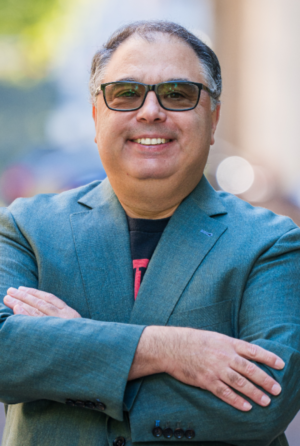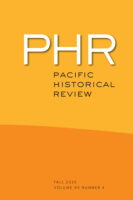New from “Pacific Historical Review”: Editor’s Essay, Nuclear Nature, Chinese Exclusion, and the JACL

Professor Marc S. Rodriguez has edited the Pacific Historical Review for over a decade. From his vantage point at the Editor’s Desk, he offers reflections on history, the university, and the role of scholarly journals. Read “Looking Back and Looking Forward in Academic Publishing: Reflections on a Decade at the Pacific Historical Review Editor’s Desk.”
The fall 2025 issue of Pacific Historical Review also contains articles on the Rocky Flats nature preserve, the Japanese American Citizens League, and the Geary Act.
Proxies for Pollution: The Rhetorical Making of a Nuclear Wildlife Refuge
by Micaela Cruce
America’s nature reserves inspire visions of pristine landscapes, untouched by human pollution—and certainly free of nuclear contamination. But historian Micaela Cruce found a different story in her examination of Colorado’s Rocky Flats, a 5,000-acre grassland habitat. After the Cold War, the U.S. government transformed Rocky Flats from nuclear weapons manufacturing site to national wildlife refuge. Politics and the press have long factored in the making of America’s national landscapes, parks, forests, and refuges; and Cruce reconstructs the post-Cold War reality and public relations crises that the Department of Energy faced during the 1990s and early 2000s: how do you clean up a political scandal and nuclear contamination? Cruce follows the US government's “greenwashing” of a toxic history, highlighting the backroom deals and national media campaigns to cleanse Rocky Flats’ radioactive image and replace it with a conservationist vision as a “wildlife refuge.”
“No Chinese Should Obey It”: A Transpacific History of the Geary Act
By Alexander Jin
As the nineteenth century came to a close, Chinese immigrants faced a quandary. The 1882 Exclusion Act, which denied Chinese laborers entry into the United States, had severely limited Chinese immigration. Ten years later, U.S. lawmakers proposed the Geary Act, a law that required Chinese immigrants already living in the country to pay a registration fee or face the threat of deportation. Historian Alexander Jin uncovers resistance to the Geary Act一calling it “one of the largest civil disobedience movements of the nineteenth century.” By tracing the registration boycotts from individual Chinese immigrants, to the Six Companies, to their white allies in San Francisco, Jin reveals an often-overlooked international dimension to the protests that would prove to be a massive thorn in the sides of federal officials. At stake was the future of U.S. immigration policy.
Claiming America, Brokering Empire: The Japanese American Citizens League and the U.S.-Japan Security Relationship, 1950–1972
By Mark Tseng-Putterman
How do U.S.-Asia relations affect the treatment of Asian Americans? Historian Mark Tseng-Putterman studies the Japanese American Citizens League during the Cold War, focusing on its efforts to defend the civil rights of Japanese Americans by promoting friendly relations between the U.S. and Japan. This strategy was complicated in 1960 by mass protests in Japan that objected to the U.S. military presence in Japan and Okinawa. Some Americans saw these protests as evidence that Japan might "fall" to communism. In response, JACL leaders argued that Japanese Americans should use their cultural connection to Japan to promote a positive image of American power and support a continued U.S. military presence in Japan. By highlighting Japanese American loyalty to U.S. objectives abroad, the JACL's strategy shows how US foreign policy and military goals have shaped strategies in the fight for Asian American civil rights.

Not yet a subscriber? Purchase an individual subscription and/or ask your library to subscribe. You may also purchase print copies of the Fall 2025 issue of Pacific Historical Review (issue 94.4), as well as other individual issues of PHR, on the journal’s site.
We publish PHR in partnership with the Pacific Coast Branch of the American Historical Association.